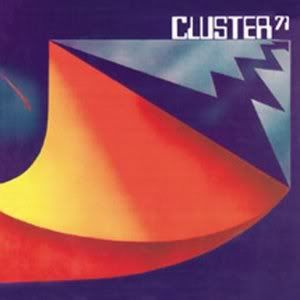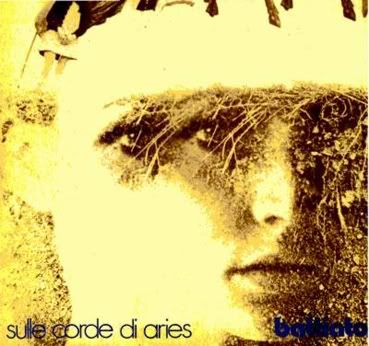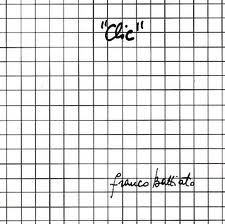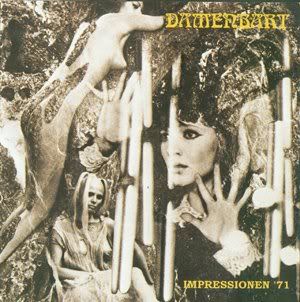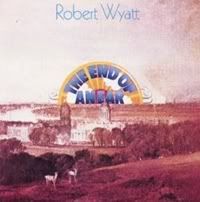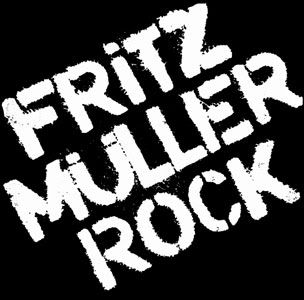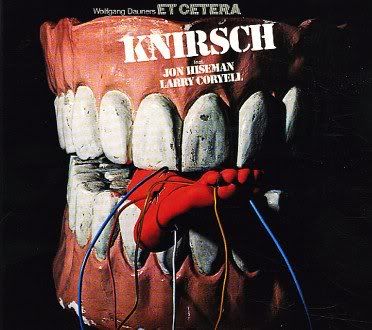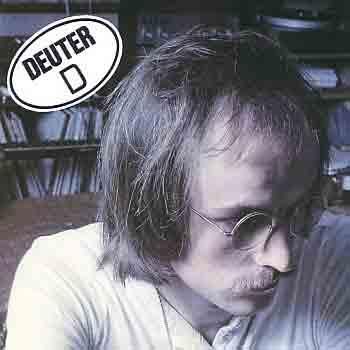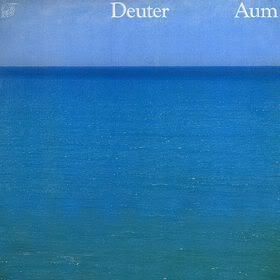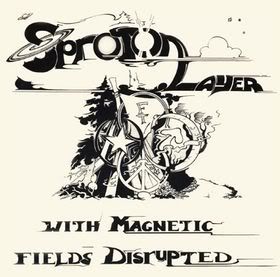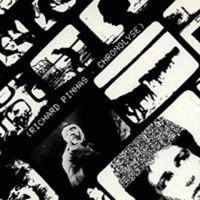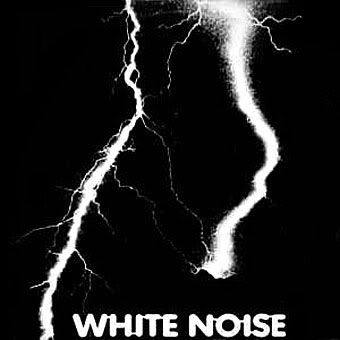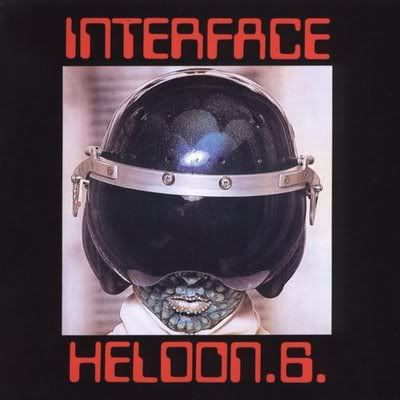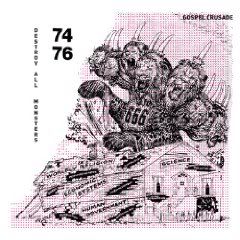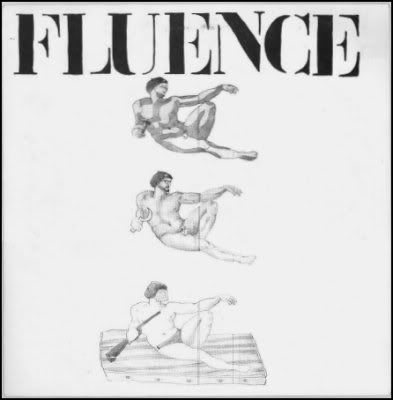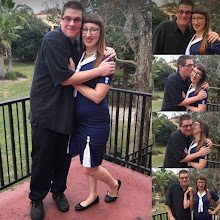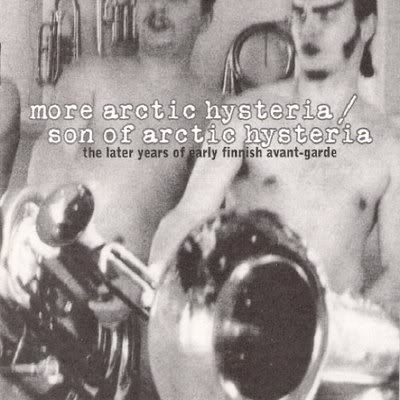
Love Records, 2005; available
2 discs; disc 1 (MORE ARCTIC HYSTERIA):15 tracks, 76:07; disc 2 (SON OF ARCTIC HYSTERIA): 19 tracks, 73:48
Picking up where ARKTINEN HYSTERIA left off, this double-disc feast of experimental sounds covers 1970 to 1990 (with two bonus '60s tracks for good measure!). As the liner notes point out, the first disc leans more towards jazz and modern compositon, while the second is more on the rock side. Let's plunge into the track-by-track description, shall we?
MORE ARCTIC HYSTERIA
1.Pekka Streng, "Olen Väsynyt" ("I'm Tired", 1970) - A weird bit of prog-folk from this psychonaut. The main almost synth-like drone is actually produced by a Jew's harp. Nice opening track!
2.Karelia, "Kahella Sarvella" ("With Two Horns", 1972) - This is a somewhat grating rendition of a folk song. It's fairly close to the Godz or the Fugs. Free jazz guy Edward Vesala is involved, though!
3. Samsa Trio, "Kiven Poiminta" ("Pickin' Up A Rock", 1972) - It's our old friend Pekka Airaksinen! Here, he teams up with fellow ex-Sperm members Antero Helander and Mattijuhani Koponen to play free jazz. It's very different from the Sperm and Airaksinen's solo work, but it's very nice indeed!
4. The Omar Williams Experience, "Democracy" (circa 1971-1972)- Airaksinen and Helander team up with American poet Williams for a more chaotic form of free jazz. This is also a really good track. It ends with a brief but amusing recital from Williams.
5. Osmo Lindeman, "Ritual" (1972) - Early electronic bliss! Lindeman's concrete gem is intended to gently parody religious services. It rightfully won an award (in Italy!) the year it was composed. I highly recommend this for fans of Xenakis et al.
6. Jarmo Sermilä, "Electrocomposition 1" (1976) - Another unjustly little-known piece of early electronic wizardry! Performed solely on the EML 101, this squelchy delight deserves to be heard. Thank goodness for compilations like this!
7. Åke Andersson, "Kaukonen Ennen Vanhaan" ("Kaukonen In The Old Days", 1977) - This guy was one half of the Finnish equivalent of the BBC Radiophonic Workshop. The song is a shifting electronic landscape meant to evoke a Sami village. It accomplishes everything the Residents' ESKIMO meant to in just six minutes and fifty seconds. Amazing!
8. Gandhi-Freud, "A" (1975) - Airaksinen again, here performing solo under an alias. This short track is just over two minutes of weird and wonderful synth squiggles. It's not Airaksinen's most impressive work, but it's fun.
9. Jone Takamäki Trio, "Bhupala 1" (1982) - Normally a chaotic punk jazz outfit, Takamäki and company played a more ambient style of free jazz on their second album. This track, based on an Indian traditional theme, is taken from that album. It's a great example of Indian-themed jazz, with definite raga touches and a drifting dreamy atmosphere. Very nice indeed!
10. Lauri Nykopp, "Y - Part V" (1982) - Taken from a bizarre free improv ritual recording (!), this features Nykopp playing a didgeridoo near a haystack. There's quite a bit of silence incorporated into the piece as well. It's atmospheric, strange, and completely fascinating.
11. Edward Vesala, "Maailman Reuna" ("Edge Of The World", 1982) - A completely unexpected proggy excursion from Vesala and company. It's barely over two minutes, but it's a blast of fun that resembles early Soft Machine mixed with equally early Henry Cow. I really want to hear the rest of this album!
12. Matti and Pirjo Bergström, "Virkamiehet - excerpt from The Forgotten Horizon" ("Bureaucrats", 1980) - A husband and wife duo scoring an avant-garde dance production with catchy-yet-strange synthpop. It's great!
13. Ilkka Volanen, "Kahlaaja - excerpt" ("Wader", 1982) - Oh man, I wish they included this whole track! This is ten and a half minutes from a twenty-four minute piece. What IS here is an amazing and moody sound collage. This easily rivals anything Nurse With Wound was doing at the same time. Wonderful!
14. Kaj Chidenius, "W" (1964) - One of the two '60s bonus tracks, this is a Dadaist prankster reciting Schwitters' poem. In other words, it's the Finnish equivalent of "W" being said in various funny ways for just under a minute. Amusing but not essential.
15. M.A. Numminen, "Oigu-S" (1964) - This, on the other hand, is absolutely essential! It's a collage tape assembled by Numminen and Erkki Kurenniemi. Originally used to back up Numminen's performance on Kurenniemi's "voice machine", it stands on its own as yet another fascinating sound collage from Finland's early avant scene.
SON OF ARCTIC HYSTERIA
1. Kollaa Kestää, "Tähtien Rauha" ("Star Peace", 1978) - These guys were known as a punk band, but here they perform drum machine-led spacey new wave with moody vocals. It's a lot better than that sounds!
2. Aavikon Kone Ja Moottori, "Rakkaudella Sinulle" ("With Love To You", 1980) - Weird group chanting with electronic backing is cut off by the sound of a bird cage being beaten by a relay. Strange, but not bad.
3. Kari Peitsamo, "Puinen Koira" ("Wooden Dog", 1978) - The puckish Peitsamo was mostly known for quirky pop. This is the absolute opposite of quirky pop! For seven minutes, he produces some awful screeches from a violin. It's noisy, it's irritating, and it's amazing.
4. Yhtye, "Apatian Tanssi" ("Dance Of Apathy", 1979) - Yhtye's drummer pounds a bass drum in a rhythmic way for fifty-eight seconds. I love this minimalist joke more than I should.
5. The Silver, "Do You Wanna Dance" (1980) - Oh boy, HERE'S a monster! Three teens ("Harry Angel", "Calamity Jane", and an unknown third member; yes, that's ALL the info available!) destroy the classic rock tune and record the results to some kind of cheap tape recorder. This one has to be heard to be believed, but imagine the Shaggs as punks/noise-rockers and you'll have an idea. The shrieking breakdown is especially amusing. I genuinely love this song, even though it's truly untamed and unmusical.
6. Hefty Load, "Schrecklich" (1981) - Apparently put together to use up free studio time, Hefty Load plays a weird and loose style of space rock. The synth player was also the producer, and he had never played a synth before. Interesting track, really!
7. Vaaralliset Lelut, "Alkuasukkaiden Lääkkeet" (1984) - Would you believe this is catchy instrumental dub reggae performed by Finns? Would you believe it's also really good? Well, whether you believe it or not, both are true.
8. Jaakko Kangosjärvi, "Musiikki Ja Urheilu" ("Music And Sports", 1981) - Silly minimal synthpop with female vocals sung in German-accented Finnish. Utterly disposable (and those synths sound CHEAP!), but absolutely endearing. I find myself listening to this one a lot.
9. Tapa Paha Tapa, "I Love It" (1983) - This was some sort of collective band, but only two members play on this track. It's a nice and moody number, somewhat like Heldon. I'd love to hear more of this group.
10. Swissair, "Baggage Claim" (circa 1981) - Another collective, these guys seemed to be the heirs to the Sperm's throne. One of them plays a repetitive guitar line while two others play his pickups and pedals. There's also a primitive drum machine clunking along. It's utterly hypnotic and could easily be mistaken for solo Airaksinen (which is a VERY high compliment!).
11. Harri Tuominen, "Lippukunta" ("Brigade", 1984) - Interesting post-punk collage piece. It was inspired by Expressionist cinema, and it's fittingly moody and cinematic.
12. Suomen Poliisit, "Mihin Sie Meet Keijo" ("Where Yuh Goin', Keijo", 1984) - This is actually the cult act Sleepy Sleepers under a pseudonym. For this project, they played in a gloriously noisy and amateurish fashion to parody punk and noise-rock. "Hey Joe" gets this treatment here, and the results are wonderfully sloppy and nasty.
13. Kansanturvamusiikkikomissio, "Kalinka" (1985) - It's probably no surprise that this band is usually referred to as KTMK! This furious hardcore number features some truly frenzied vocals and delightfully angular guitar. It does seem somewhat out of place, but I personally love KTMK, so I don't mind!
14. Joan Bennett Museo, "Empty Faces" (1984) - This is strange minimal pop that degrades into weird vocalisations. The group was an offshoot of a performance art troupe called Homo $. Decent, but not a standout.
15. 500 Kg Lihaa, "Pallokentällä" (1982) - Finnish no wave is the best way to describe this stunner. Maritaa Kuula gets progressively crazier with her vocals, at one point uttering shrieks that would put Galas to shame. The band nobly keeps up with repetitive organ, dual guitars, and a steady rhythm. These guys had a long career, and I intend to acquire more of their stuff.
16. Super Ladex, "Olet Valloissasi" ("You're In Your Power", circa 1981-1984) - This is an acquired taste, that's for sure! Three siblings made this chaotic burst: two boys, nineteen and ten respectively, and a six-year-old girl. They went around their house grabbing random junk and objects. It sounds like most of the lyrics (which come from labels, comic books, and the like) are screamed or shouted by the girl, but some of it could very well be the boys. It also sounds like this is possibly a bunch of smaller songs assembled together noisecore-style, but there's no proof that this was the intent. While it's pretty funny and even creative, it didn't really need to run for eight minutes.
17. Gagarin-Kombinaatti, "Raskas" ("Heavy", 1984) - Early industrial from the Neubauten school. It's sadly short at only two minutes, but that doesn't change the fact that it's an amazing bit of grinding metallic synths and real sheet metal being pounded and drilled. Mika Vainio of Pan Sonic got his start here as well, and it's definitely interesting to hear what he was up to previously.
18. Jimi Tenor and his Shamans, "Le Petomane (380v)" (1990) - The most recent track on the collection is an interesting industrial piece by Tenor and his gang. There's some weird instrumentation, but the definite show stopper is the Sirkka II custom-built drum machine. I can't figure out how it works by looking at it, since it resembles a spinning wheel, but its thudding beats propel this nifty little tune. This one could honestly be mistaken for Test Dept.
19. Reinin Myrkky, "Snorkkelijenkka: ("Snorkel Jenka", 1989) - Closing out the collection is Tenor and some freinds parodying a jenka tune. It's an amusing blast of polka-esque silliness, and it's over in twenty-five seconds.
Overall, there's too many winning tracks on this album to grouse about any of the lesser numbers (and those are at worst merely interesting). It's a wonderful companion to ARKTINEN HYSTERIA or a perfect standalone primer. I strongly recommend finding a copy at all costs and blowing your mind.
